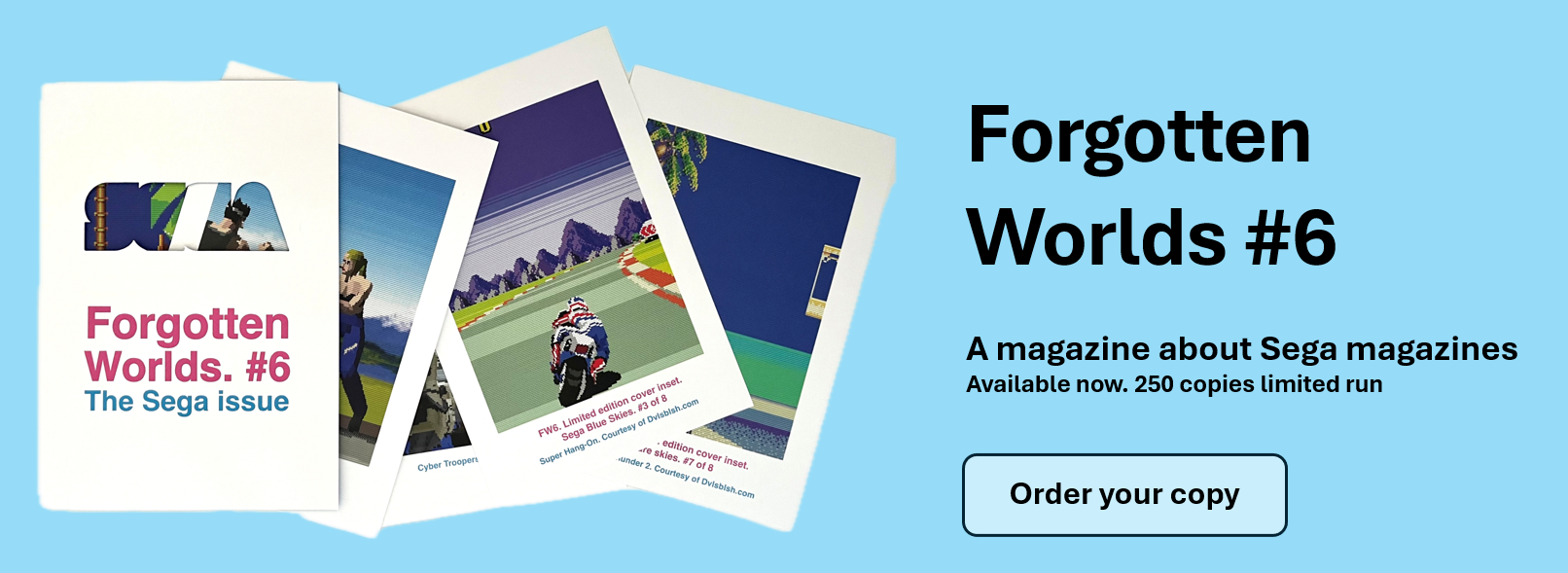The rise and fall of Mega Drive shmups.
As told via reviews in C+VG and Mean Machines.
MUSHA Aleste is considered one of the best shoot-em-ups (or shmups) on the Mega Drive and sells for upwards of $300 on eBay.
It’s part of the initial Mega Drive line-up to hit the new Switch subscription tier. Which is the first real opportunity for most people to experience it. But it received decidedly mixed reviews upon release in late 1990.
C+VG awarded it 70% back in the day, with reviewer Rich Leaderbetter lamenting its lack of originality.
“MUSHA is yet another vertically scrolling shoot-em up. Why are there so many of the flipping things on the Mega Drive… MUSHA is a smooth, playable blast, but it’s a shame it’s so unoriginal and unchallenging. Give it a miss.”
The Darius 2 review in Mean Machines a few months later struck a similar note. “I can’t believe how many horizontally scrolling shoot em-ups are being released for the Mega Drive at the moment - it’s getting a bit much,” noted Julian ‘Jaz’ Rignall. “Personally, I’m getting a bit bored of them,” said Matt in the same review.
Image supplied with permission from Out of Print Archives
If UK reviewers were getting sick of shooters at the turn of the decade, they were well and truly over them by the time Gley Lancer appeared on the Mega Drive in 1994.
Currently listed for $700+ on eBay, Gley Lancer received a very cold response in Mean Machines Sega, which awarded it 48% (in an infamously grumpy review). Rad Automatic wrote that, “Spotting which game each idea/alien/level has been stolen from is quite fun for a while, [but] it doesn't excuse the almost absolute lack of original thought which went into this game”
Bullet hell
A quick glance at http://www.shmups.com/ lists over 60 shmups released for the Mega Drive / Genesis during its lifespan. For anyone who was around back then, and remembers the magazine coverage, that sounds like a very conservative estimate.
Shoot-em-ups formed the backbone of the Mega Drive catalogue during its early years. That’s not a coincidence. Shooters were the go-to-genre in Japanese arcades throughout the late 80s, and the Mega Drive (alongside the PC Engine) had the technical grunt to do them justice at home.
As Julian ‘Jaz’ Rignall explained in a 2020 interview, “Technology played a huge part in helping make Japanese shooters the best in the business. The PC Engine and Mega Drive almost seemed to have been specifically designed as shoot-em-up machines, and they were able to run those kinds of games very well.”
“Console shooters such as R-Type, Gunhed, and Super Star Soldier on the PC Engine, and Hellfire, Truxton, and the Thunder Force series on the Mega Drive really stand out to me as the best shooters of the late 80s/early 90s.”
All those games Jaz lists (with the exception of the ThunderForce series) were released around 1988-1989. Which was the genre’s heyday.
But as the 90s got underway proper, and the Mega Drive’s library shifted towards scrolling beat-em-ups, platformers, and all things Street Fighter 2 related, the release of new shooters fell off a cliff.
Things fall apart
While shifting consumer tastes in the west helped relegated the shooter to obscurity, the failure of the Mega Drive in Japan also played its part.
The first generation of Mega Drive releases were largely driven by small Japanese developers who could bang out a shmup on a tight budget with a small team. Sega needed third party titles for its new 16-bit consoles, and happily published these games to help bolster the Mega Drive’s library.
But as Sega’s fortunes changed, and Sonic took the Mega Drive mainstream, the system’s library was greatly expanded by the new publishers entering the market. All of a sudden the niche shooters that had been able to carve out an audience began to look increasingly archaic to western audiences.
Running in parallel to all this was Mega Drive’s failure in Japan. The small software houses that had specialised in shooters suddenly found themselves overlooked and out of business.
That meant late generation classics like Eliminate Down and Slap Fight never made it to western shores. A fact reflected in their current eBay prices.
Team allegiances
In other words, the increasingly dismissive reviews in C+VG and Mean Machines were a product of broader shifts in the industry.
For a modern analogy, you could look at cover based shooters, or plastic instrument rhythm games - fun for a bit, but you don’t necessarily want to play 10 in a row.
At this juncture, I should emphasize that we’re specifically talking about C+VG and Mean Machines. Some publications were more generous with their scores, some ignored shooters altogether, and some were on the fence.
But in those days magazine allegiances were similar to football loyalties. You had your team and you stuck with them through thick and thin. So if Mean Machines said Gley Lancer was a bit rubbish then that was the end of it, and no further discussions would be entered into.
Still, I wish I had picked up MUSHA and Gley Lancer back in those days.
….










